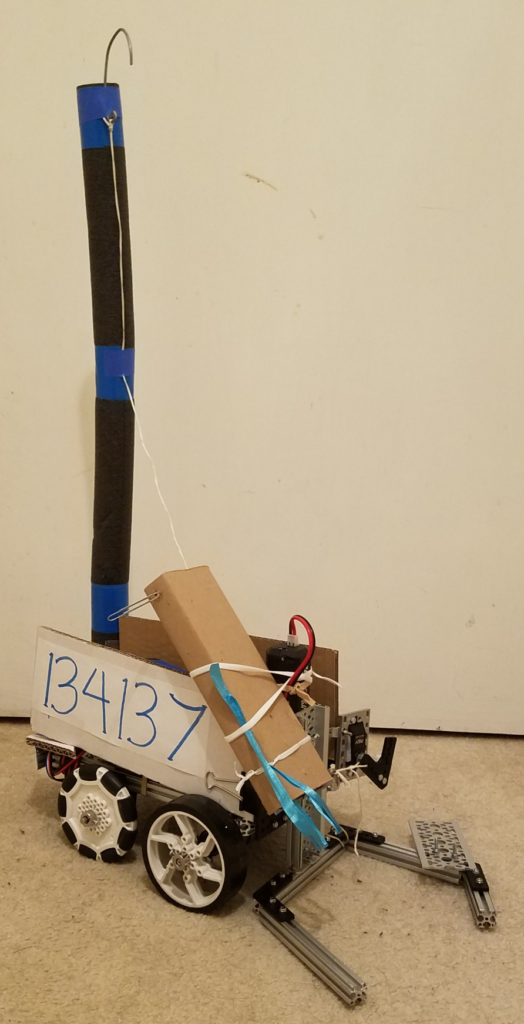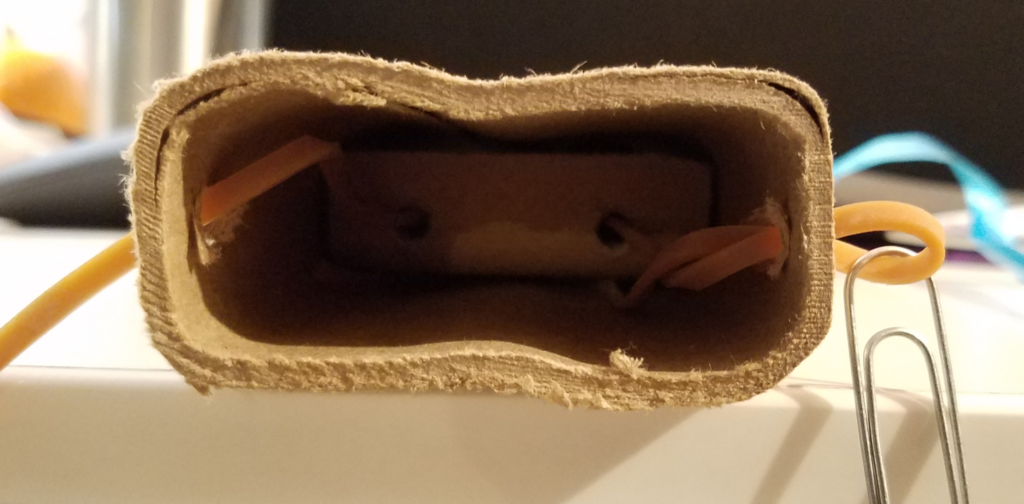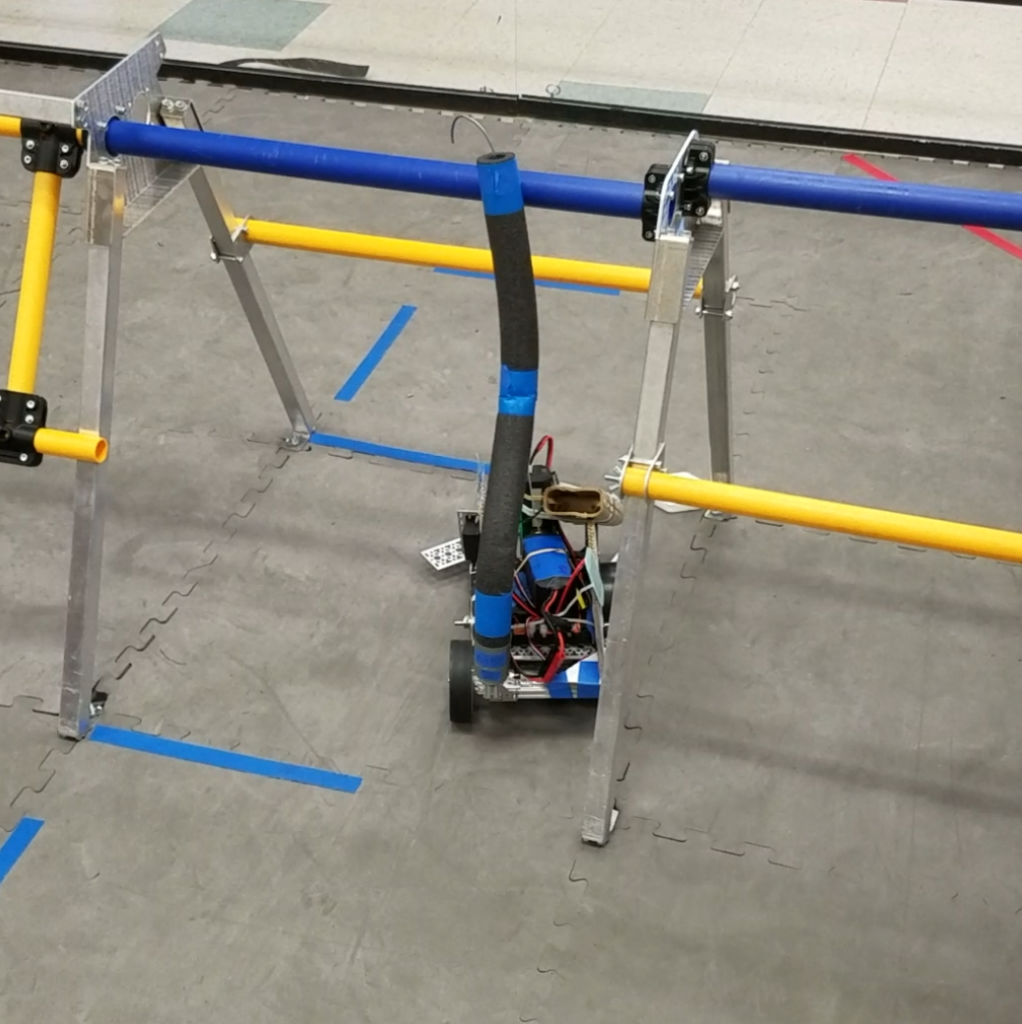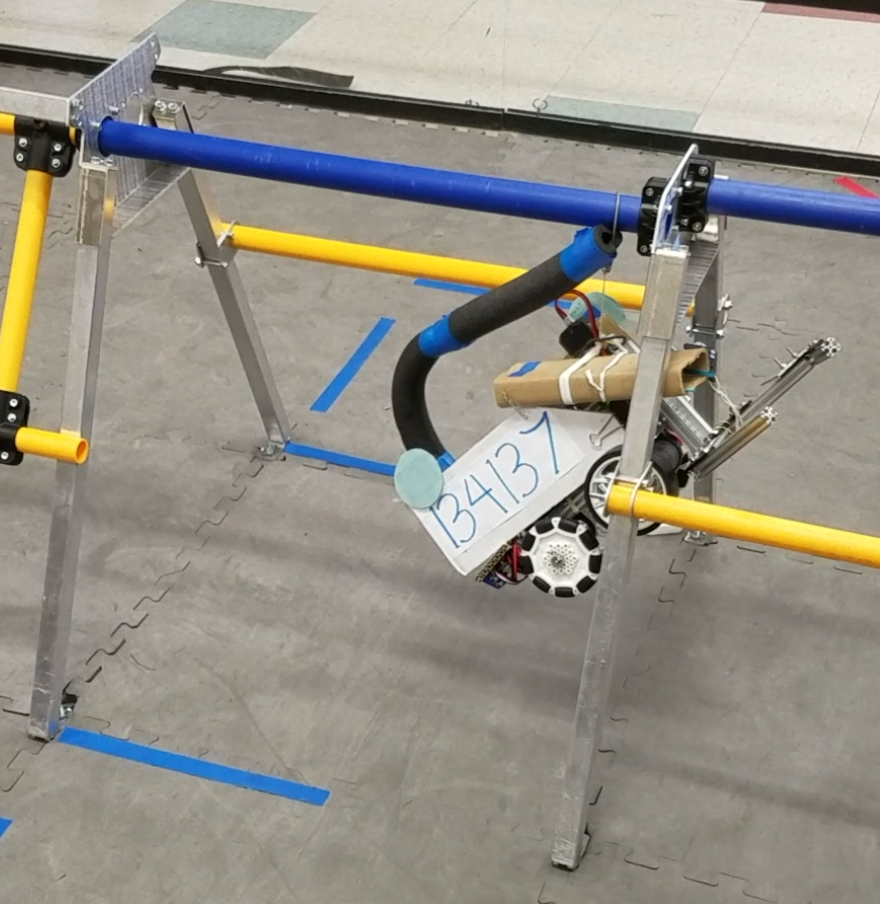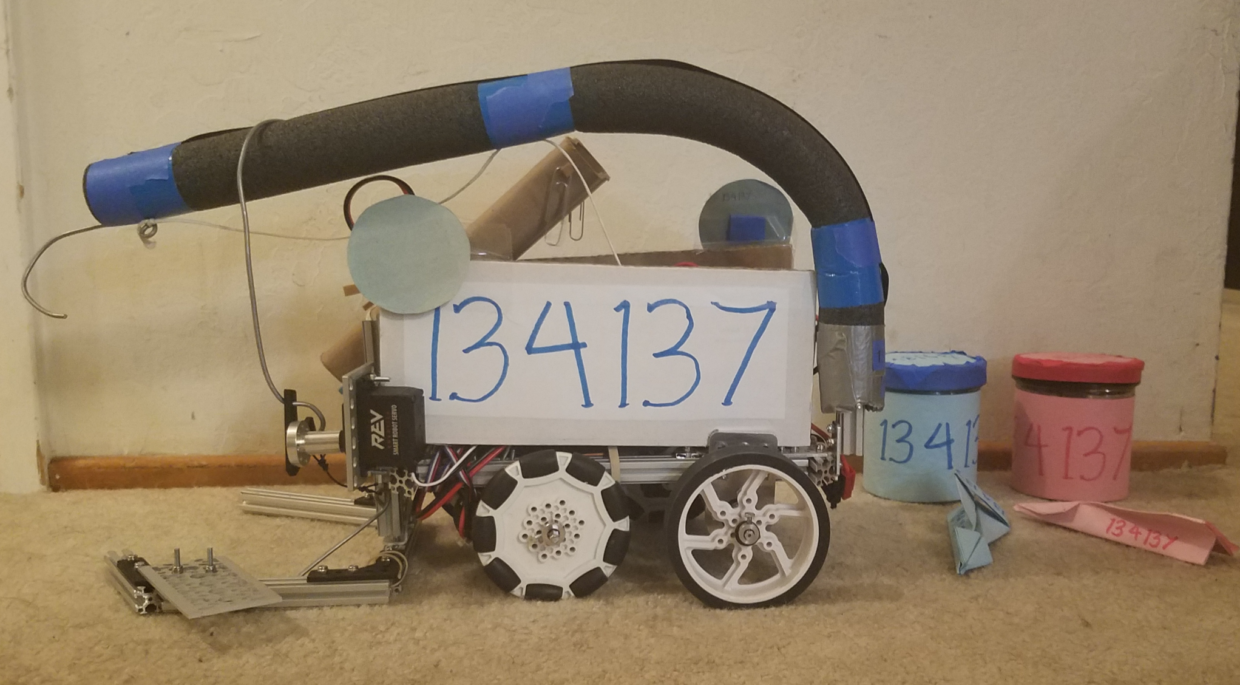I volunteered as hardware & game strategy mentor to empower students to overcome challenges and learn engineering principles in the FIRST Tech Challenge˺ competition. For 2023-24, I mentored 4 teams & advised an additional 4 teams. I primarily work with middle school age students, helping them learn organization, management, and technical skills needed to compete against high school teams.
Awards
- Winning Alliance
- Finalist Alliance x2
- Design Award x2
- Control Award x2
- Innovate Award
- 1 team advanced to regional competition
- 6 teams reached the semifinals in at least one of their events
“Baby Bot” Demonstration Robot
In collaboration with a software engineer, I built “Baby Bot,” a mini robot to inspire students by demonstrating how a simple yet thoughtful system can be competitive despite looking like a toy. “Baby Bot” could score 70+ points early in the season, when the median score in games at many local events was less than 70 points.
“Baby Bot” was brought to 8 middle-school age teams and 3 high-school age teams early in the 2023-24 season. Students got to test drive the robot, which was especially fun for newer team members and those who felt intimidated by the complexity of driving their team robot. Teams had the opportunity to practice working alongside an alliance partner that performs certain tasks very well but cannot do other tasks, challenging them to focus on these other areas. This proved valuable in competitions when cooperating with other teams whose robots might not do all tasks equally well.
Capabilities
- Doing a “pull-up” by releasing a flexible pole, catching a hook on the bar, and retracting a cord. One team later adapted this idea to connect a hook to a pivot arm instead.
- Launching a paper airplane from a rubber band cannon
- Autonomously depositing a disc (aka. “pixel”) on one of three lines randomly marked by a small box using only mechanisms (most students use sensors, which can be more complicated and error-prone)
- Being unusually small (only 10 inches wide vs. typical 14-18 inches) for increased maneuverability around obstacles, allowing it to make more round-trips across the playing field per game
